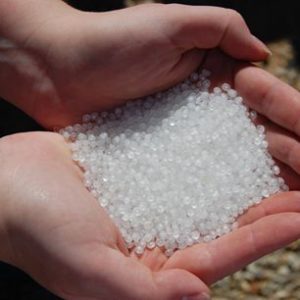
We’ve all seen pictures of sea turtles, shore birds, and marine life that have entangled themselves in or otherwise consumed plastic rings, bags, and other plastic products. But, these small plastic pellets pose an even more insidious threat.
Polyethylene pellets are a clear-to-white, solid, plastic product. Depending upon its density, the pellet will float on the surface, be suspended just below the surface, or drop to the bottom of the streams and bays. They can be widely distributed and persistent in land and water systems; they will not biodegrade in the environment.
Because they are so small, they look like fish eggs, and other “attractive” food for shore birds and marine life. Polyethylene is not readily digestible; pellets can accumulate in the digestive systems of sea birds and marine life causing death by starvation. Studies have also found the pellets soak up toxic chemicals from seawater, poisoning the creatures that swallow them; they effectively become poison pills.
In a study conducted years ago by the EPA, they found 250,000 pellets floating in the Houston ship channel. Just last year, the Formosa plant in Victoria was found to be responsible for the discharge of these pellets into Cox Creek that flows into the bay. TCEQ found them floating on the surface and embedded in the creek bottom and ultimately found they violated their permit.
These pellets will be produced by Exxon and loaded onto rail cars for shipping. They will be present in the effluent discharge; they will drain off the surfaces into the stormwater. Exxon says they will use Best Management Practices to contain the pellets. So did Formosa.
These pellets will flow through the drainage ditches and effluent pipeline to Copano Bay and the La Quinta Channel. Where they go from there is dependent upon tidal flows. Will marine life be able to distinguish what is good and bad for them? Will the redfish and trout consume them? Will we see them along the shores of the bay or at Indian Point? Will the skimmers be able to distinguish them as they fly along the surface water. Will the piping plover be able to determine they are not eggs? How many species will be impacted?
If you are concerned, share this post with other groups who care about our unique environment and speak out at the Public Meeting on December 11. Exxon must guarantee 100% that these pellets will not be discharged and TCEQ should include a specific prohibition of discharge in the permit. Otherwise, the Wastewater Permit should be denied.
See the story on the Formosa discharge at the link below.
https://www.victoriaadvocate.com/news/2016/feb/20/former-formosa-worker-finds-plastic-pellets-in-bay/